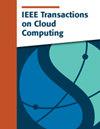基于图分区的多粒度联邦学习
IF 5
2区 计算机科学
Q1 COMPUTER SCIENCE, INFORMATION SYSTEMS
引用次数: 0
摘要
在边缘计算中,能量有限的分布式边缘客户端面临着异构性、高能耗和安全风险等挑战。传统的基于区块链的联邦学习(BFL)很难同时解决这三个挑战。本文提出了一种基于联盟区块链的图分区多粒度联邦学习方法,即GP-MGFL。为了减少整体通信开销,我们在引入观察者节点和共识节点的同时,采用平衡图划分算法。该方法对客户进行分组,以最大限度地减少高成本的通信,并关注每个组内的指导效果,从而在减少开销的情况下确保有效的指导。为了充分利用异构性,我们引入了一种跨粒度引导机制。该机制涉及细粒度模型指导粗粒度模型,以提高后者模型的准确性。引入信用模型,动态调整模型对全局模型的贡献,动态选择负责模型聚合的领导者。最后,我们在真实的物理硬件上实现了一个原型系统,并与几个基线进行了比较。实验结果表明,GP-MGFL算法的精度比普通BFL算法提高了5.6%。此外,与其他分组方法(如贪婪分组)相比,本文方法的准确率提高了约1.5%。在恶意客户端场景下,准确率提升最高可达11.1%。我们还分析和总结了分组和客户端数量对模型的影响,以及该方法对区块链本身固有安全性的影响。本文章由计算机程序翻译,如有差异,请以英文原文为准。
Multi-Granularity Federated Learning by Graph-Partitioning
In edge computing, energy-limited distributed edge clients present challenges such as heterogeneity, high energy consumption, and security risks. Traditional blockchain-based federated learning (BFL) struggles to address all three of these challenges simultaneously. This article proposes a Graph-Partitioning Multi-Granularity Federated Learning method on a consortium blockchain, namely GP-MGFL. To reduce the overall communication overhead, we adopt a balanced graph partitioning algorithm while introducing observer and consensus nodes. This method groups clients to minimize high-cost communications and focuses on the guidance effect within each group, thereby ensuring effective guidance with reduced overhead. To fully leverage heterogeneity, we introduce a cross-granularity guidance mechanism. This mechanism involves fine-granularity models guiding coarse-granularity models to enhance the accuracy of the latter models. We also introduce a credit model to adjust the contribution of models to the global model dynamically and to dynamically select leaders responsible for model aggregation. Finally, we implement a prototype system on real physical hardware and compare it with several baselines. Experimental results show that the accuracy of the GP-MGFL algorithm is 5.6% higher than that of ordinary BFL algorithms. In addition, compared to other grouping methods, such as greedy grouping, the accuracy of the proposed method improves by about 1.5%. In scenarios with malicious clients, the maximum accuracy improvement reaches 11.1%. We also analyze and summarize the impact of grouping and the number of clients on the model, as well as the impact of this method on the inherent security of the blockchain itself.
求助全文
通过发布文献求助,成功后即可免费获取论文全文。
去求助
来源期刊

IEEE Transactions on Cloud Computing
Computer Science-Software
CiteScore
9.40
自引率
6.20%
发文量
167
期刊介绍:
The IEEE Transactions on Cloud Computing (TCC) is dedicated to the multidisciplinary field of cloud computing. It is committed to the publication of articles that present innovative research ideas, application results, and case studies in cloud computing, focusing on key technical issues related to theory, algorithms, systems, applications, and performance.
 求助内容:
求助内容: 应助结果提醒方式:
应助结果提醒方式:


